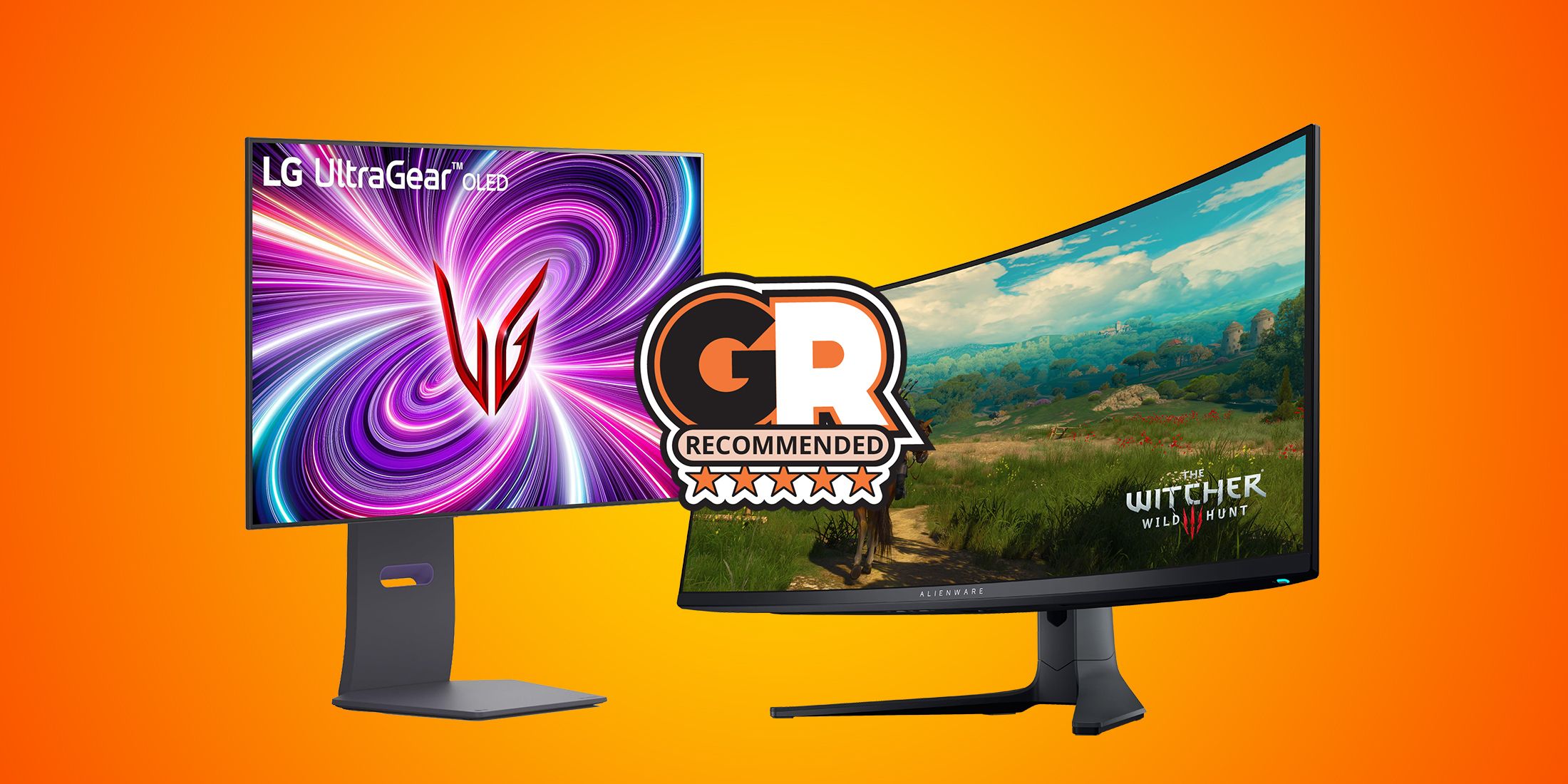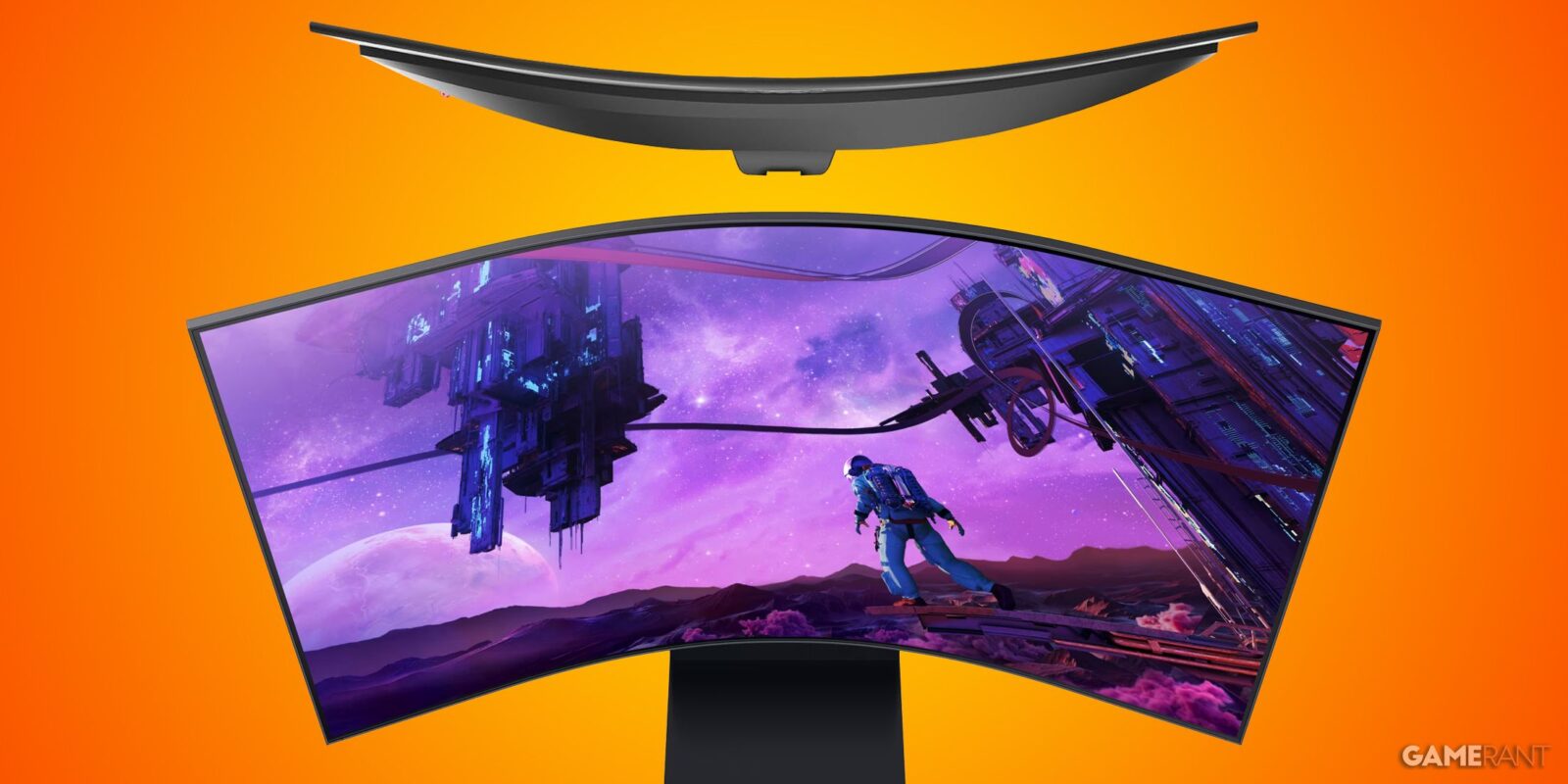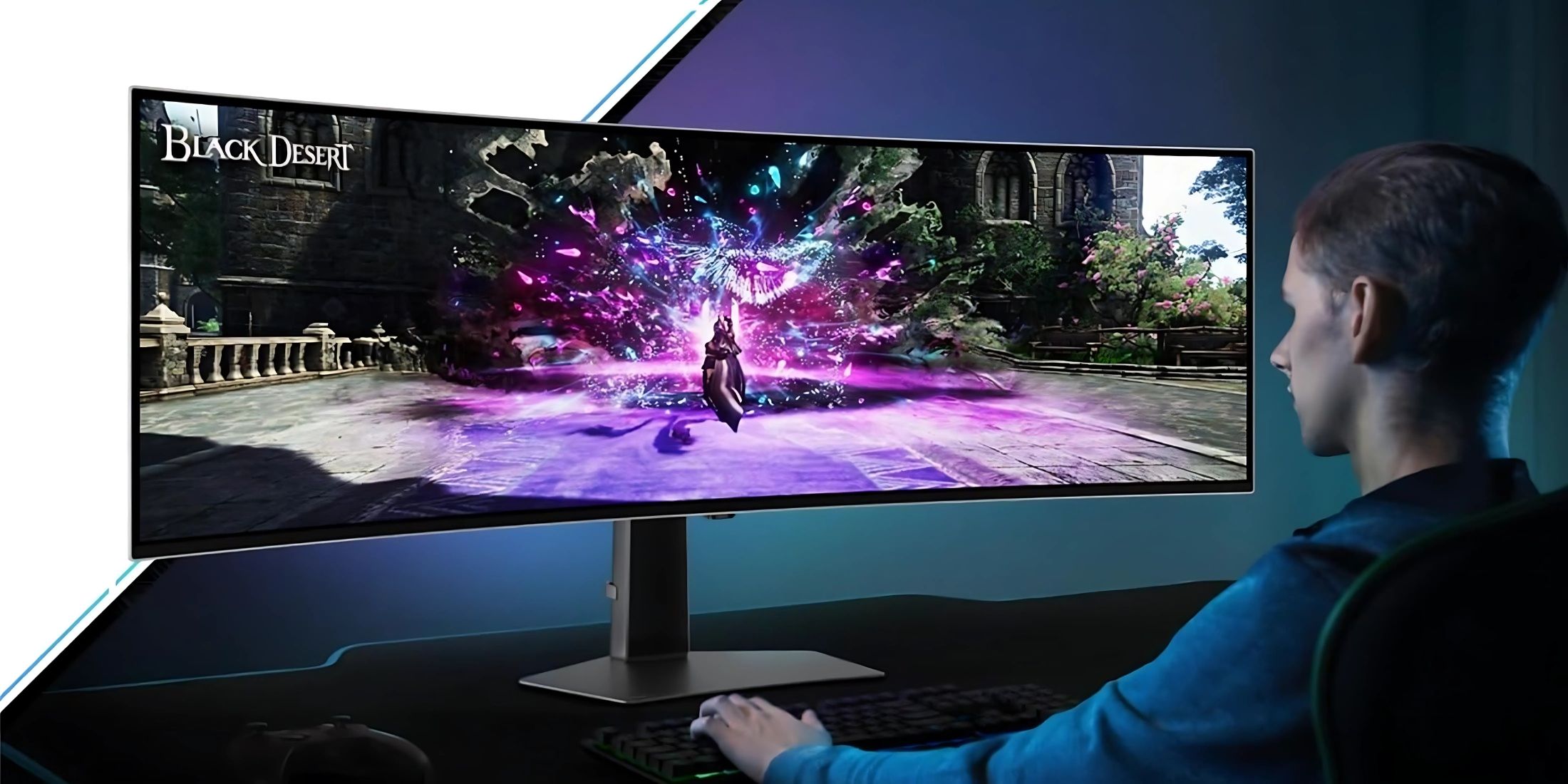Samsung released the first curved monitor in 2014. Gradually, their unorthodox screens became commonplace on gaming desks and workstations. Some owners like the look of these monitors as a more fluid alternative to blocky panels. Gamers appreciate how they show a more realistic representation of virtual worlds.

Related
Ultra-wide vs. 4K Monitor: Which One is Best for Gaming?
Choosing between a 4K and ultra-wide monitor can be challenging. Here’s everything you need to know before making a decision.
The advantages of curved monitors are not always obvious.Some skeptics opt for flat, 16:94K monitors, worried about how games look with unusual aspect ratios. Also, it’s not clear what size is most appropriate for different setups.Manufacturers praise their ergonomics, but how can curved screens benefit your eyesight?To clear up any confusion, let’s examine how curved screens enhance gaming and productivity.
Improved Immersiveness
Curved monitors wrap around gamers, making them feel part of the spectacle. While it doesn’t quite match the VR headset experience, immersive visuals are maintained when looking left and right. With improved depth perception, images displayed on curved screens look more three-dimensional. Gamers are also better able to detect the position of objects and enemies. On flat screens, everything in an environment seems to be the same distance from players.
The benefits of curved monitors apply to watching movies and watching TV. For instance, IMAX theaters provide a premium cinema experience specifically because their massive screens aren’t flat. When explosions happen on the edges of screens, viewers can focus on them immediately without sharp head turns.
How immersive a curved monitor is depends on screen size and position in a setup. The largest ultrawide monitors, like the Samsung 49-inch Odyssey G9, can turn an entire desk into a gaming paradise. On the other hand, many curved monitor benefits are lost with screens like the Samsung 24-inch Essential S3. Smaller flat monitors already stay in a gamer’s field of vision, so upgrading to a curved screen is not as advantageous.
Generally, large curved monitors allow owners to sit closer to screens than with their flat counterparts. Gamers don’t need to strain their necks like they do in close proximity to huge flat screens. That comes as a relief to buyers worried that a large display may not be practical. The sharper the screen’s curve, the closer you want to sit to the monitor to feel surrounded.
Health Benefits
When you think of peripherals designed for comfort, curved monitors probably don’t come to mind first. Still, ergonomic keyboards and mice aren’t the only gear that makes long gaming or working sessions less stressful. Like other gaming and office accessories, certain monitors prove their value only after extended use. For example, with more of an image in your field of vision, curved monitors help prevent neck pain. Additionally, the positive impacts on a gamer’s eyesight are just as significant.

Related
IPS Vs VA: Which is the Best Gaming Monitor Panel?
IPS and VA panels have their various strengths and weaknesses, but which one delivers the best experience for gaming?
Without changing sitting positions, the far edges of images often lose their definition on large, flat screens. Text becomes blurry, and different game textures blend in with each other. The phenomenon is especially common with cheaper TN and VA panels. IPS monitors have improved viewing angles, but curved screens maintain clarity best.
Poor viewing angles during productivity and gaming are more than annoying. Gazing at distorted images causes eyes to struggle to focus. In most cases, your eyesight won’t deteriorate, but fatigue will soon set in. Spending long hours gaming or completing a project simply tires us out. The shape of curved screens follows our natural eye path. Even on the sides of these displays, images are clearly defined.
Buyers of curved monitors can further improve a setup’s ergonomics with a monitor stand. Like most monitors, these displays are best appreciated when sitting near their center point. Monitor arms allow owners to find the ideal screen placement and enable easy adjustments.
Widescreen Monitors Are Better When Curved
Not all ultrawide monitors have curved screens. Even so, curved monitors best take advantage of their immersive nature. They give a panoramic view of documents with minimal stress on necks and eyes. Curved monitors improve workflow in modern offices in several ways. Some models are even marketed more for work than gaming, like Samsung’s 49-inch Business Curved Ultrawide.
Curved monitor users enhance productivity by stacking windows side by side. Graphic designers who edit images in widescreen formats can rely on one display, rather than multiple monitors. Laying out pages side by side gives a complete view of an evolving project, especially when vertical scrolling isn’t necessary. Monitor manufacturers support various apps that simplify arranging windows on widescreen monitors.
Curved widescreen monitors are the preferred choice of racing and flight sim enthusiasts. In Microsoft Flight Simulator 2024, pilots can place instruments and panels in their side views. The game supports ultrawide resolutions, so players can more easily imagine themselves in an aircraft. In racing sim cockpits, curved screens can display the contours of windshields and adjacent windows.
Do Flat Monitors Have Advantages?
Despite curved monitors becoming more popular, flat screens are still the default choice of many buyers. The unconventional resolutions of many curved displays cause compatibility issues. For instance, the 32:9 aspect ratio and 5120 x 1440 resolution of the MSI MPG 491CQP 49-inch OLED monitor make an incredible statement on desks. Unfortunately, just finding new Windows wallpaper can be a chore. Also, many games don’t support these graphical settings without compromises.
Many PC games accommodate ultrawide resolutions, stretching images with less visual degradation. Even so, it’s not an optimal experience with HUDs, and interfaces are difficult to read. The situation is worse for consoles, and 16:9 aspect ratios often leave these games looking distorted or with large black bars. Buyers should consider a 4K monitor for the PS5 or Xbox Series X if console gaming is a priority.

Related
The Best 4k Gaming Monitors To Pair With A PS5
The PlayStation 5 is a powerful console in its own right, but gamers need the right display option to get more out of Sony’s latest console in 2024
Other Considerations
Cost is another concern when shopping for a curved monitor. Most budget curved monitors have smaller screens that don’t maximize their design’s potential. You will want to target at least a 32-34-inch display or, better yet, save up for a much larger 49-inch monitor. The most immersive curved monitors support higher refresh rates and G-sync to cater to esports. High-end models from Samsung, MSI, and Asus that combine a large screen with these advanced capabilities easily sell for more than $700.
With larger displays, finding space on small gaming desks is a struggle. Meanwhile, buyers with expansive workstations may want to purchase several curved monitors. They will soon discover that creating multiple monitor configurations is tricky. Ultrawide monitors replace several smaller flat screens with angled bezels that don’t neatly stack.
App and game developers continue adapting to curved monitors, addressing many drawbacks. For most buyers, the added immersiveness and improved ergonomics of these displays are well worth any annoyance.

More
Our Picks For The Best TV And Gaming Monitors Of 2024
From a high-end 4K 240Hz QD-OLED to a $250 mini-LED monitor, here are the top gaming TVs and monitors of 2024.
FAQ
Q: Is 1000R or 1500R better for a curved monitor?
The curvature of a monitor screen is measured with specs like 1000R, 1500R, and 1800R. The R refers to the radius a curved screen would have if it extended past its bezels and formed a complete circle. Lower numbers like 1000R indicate a higher curvature. Most buyers find that 1000R monitors closely follow the path of eyes, but less aggressive curves require a shorter adjustment period.
Q: Can you have two screens on a curved monitor?
There are several ways to show multiple screens on the same curved monitor. Software can create virtual monitors on the same screen that show multiple Windows desktops. Other monitors allow HDMI and DisplayPort sources to display simultaneously, with picture-in-picture functionality.
















Leave a Reply